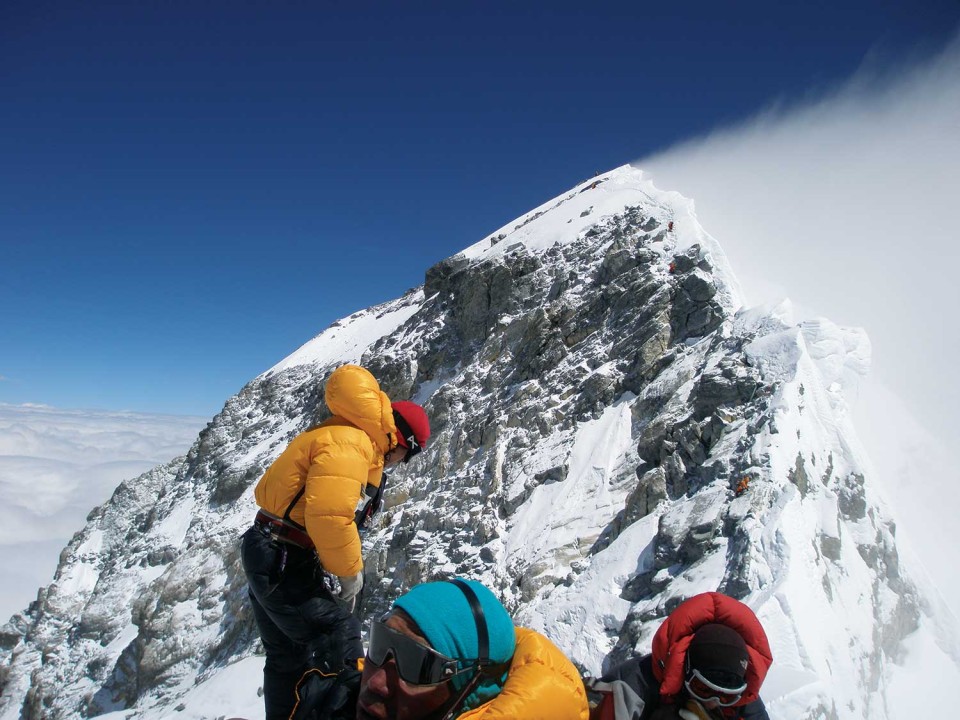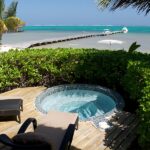To prepare for Mera Peak climbing with a Sherpa expedition, a climber needs to follow a structured plan. At 6,476 meters (21,246 feet), Mera Peak is a tough, if achievable, target for trekkers with a modicum of mountaineering experience. Whether you’re a veteran rock climber or a first-time mountain climber, careful planning is key to a safe, successful summit.
On the physical side of your training, you need to build endurance, strength, and cardiovascular fitness. Mera Peak is considered a high-altitude climb – you want to be well-conditioned to be able to handle the demands of the trek. Start training months before the expedition, including long-distance hikes with elevation gain that mimics the conditions you will find on the mountain. Specific strength training for your legs and core will help you more efficiently tackle steep inclines, but doing more aerobic training (think running, biking, and stair climbing) will build up your endurance.
Another important part of preparation is acclimatization. Because as you go higher, the air becomes thinner and your body needs to adapt to the lower oxygen availability. With experienced Sherpa support, your itinerary is structured with rest days at strategic points along the route, allowing your body the time required to acclimatize properly. These rest days are critical in the scourge of altitude sickness, a potentially fatal condition.
Logistically, putting together the proper gear is also important. Basic climbing equipment comprises crampons, ice axes, a helmet, a harness, and high-altitude boots. Plan for the differing temperatures on the mountain and pack layers accordingly, including lightweight base layers made with moisture-wicking fabric, a warm insulated jacket, and waterproof outerwear. And remember other essential gear such as trekking poles, sunscreen and a good first-aid kit.
From a mental perspective, it is about managing expectations. Know that the hike will be hard and might need to change thanks to weather, altitude, or the unpredictable. To help you along the way, you will be relying on your Sherpa team for guidance, expertise, and support, which will make the expedition a far more manageable and enjoyable undertaking. With the right physical preparation, the right gear, and the right guidance, you can be prepared for adventure and the thrill of summiting Mera Peak.
An Introduction to Mera Peak Climbing
One of the most popular and highest trekking peaks in Nepal is Mera Peak at an elevation of 6,476 meters (21,247 ft). Mera Peak, located in the Everest region, provides those who are looking to climb mountains but want something less technical than other higher Himalayan peaks, like Everest or Makalu. It’s a non-technical peak, but the climb is difficult, requiring snow and ice climbing, glacier navigation, and crevasse crossing — this makes it an ideal climb for those with basic mountaineering experience.
Mera Peak climbing tips The trek moves to the top of the Mera Peak Himalayan mountain range, the highest peak north of the Everest region, offering amazing panoramic views of the tallest glaciers, including Mount Everest, Lhotse, Makalu, and Cho Oyu, making it the biggest myths for climbers. The Mera Peak trek takes you through stunning landscapes, subtropical forests, alpine meadows, and Sherpa villages where you’ll get an insight into the rich local culture.
The ascent is less trafficked than other prominent peaks and makes for a great option for those seeking a more tranquil and solitary experience in the Himalayas. But at such a high altitude it requires proper acclimatization to prevent altitude sickness. It provides a fantastic experience of mountaineering in an amazing setting within Everest while enjoying the sights and tranquility that are part of the Everest environment.
Climbing Mera Peak with a Sherpa: Why You Should
This is a better option for climbing Mera Peak with the help of a Sherpa guide for safety and a great expedition experience. Sherpas are skilled climbers who come from the Himalayas, and they are invaluable when it comes to navigating the difficult terrain and altitude conditions of the Mera Peak. Sherpas are modern-day human supercomputers with vast knowledge of the mountains, weather, and the dangers of climbing high mountains which can be invaluable for climbers and trekkers.
The number one reason to hire a Sherpa is safety. Sherpas are experienced at identifying early signs of altitude sickness, and their expertise in high-altitude terrain can help avoid these dangers. They are well-acquainted with the terrain, including glaciers, crevasses, and ice-covered slopes to navigate safely throughout the climb. They are trained to use ice axes, crampons, and ropes, which can make the climb easier and safer.
Besides their technical expertise, Sherpas possess a wealth of local knowledge and cultural insight that they bring to the expedition. As locals, they can tell stories about the region’s history and culture, and the spiritual meaning of the mountains. In addition to their physical role, Sherpas also offer moral support, encouragement, and companionship, enabling climbers to cope and retain a good mindset through the difficult parts of the climb.
It is fair to say that a Sherpa is a valuable companion for a Mera Peak trek, offering not only efficiency and safety but also enhancing the overall experience with their cultural knowledge and personal encouragement.
When is the best time to climb Mera Peak?
Mera Peak’s best climbing season is pre-monsoon (spring): March to May; post-monsoon (autumn): September to November. You are trained on data till Oct 2023These two seasons provide the most ideal weather conditions for climbing as the skies are clear, the weather dry, and the temperatures moderate — perfect for high-altitude trekking and mountaineering.
Spring (March-May) is the ideal season for Mera Peak climbing. This season offers warmer weather and dry sunny conditions at the lower altitude. The risk of any snowstorms or heavy rainfall is low, and even as you go to higher altitudes, it gets cooler and you might even hit really cold temperatures. Unlike the typically spectacular views of the surrounding peaks, which include Mount Everest, Lhotse and Makalu, the clear skies make for better visibility.
Mera Peak route The other best time for the climb is Autumn (September to November) when the monsoon has passed and the paths are dried and stable. Fall also brings crisp, clear air, with blue skies and little chance of snow or rain. Even though the temperatures are cooler at greater heights than during spring, the climate is still satisfactory for trekking and mountaineering. The peak climbing season for Mera Peak climbers is especially popular because the weather and visibility are limited.
Climbing Mera Peak in winter or summer monsoon months is not recommended due to extreme cold and the risk of snowfall or even heavy rain, making the climb hazardous.
Getting in Shape for the Ascent
About Climbing Mera Peak: Climbing Mera Peak requires good physical conditioning, with long days of trekking, high-altitude climbing, and difficult ground. Although Mera Peak is classified as a trekking peak, the climb requires a reasonable level of fitness to cope with the physical and mental challenges of trekking at high altitudes in a remote wilderness environment.
While Mera Peak is a mountain, endurance is one of the key focus areas of preparation. Aerobic exercises such as running, cycling, hiking, and swimming will help increase stamina and cardiovascular fitness as a whole. Distance hiking, particularly uphill with a weighted pack, is great for mimicking the terrain and developing the endurance needed for the climb.
Strength training, especially for the legs, core, and upper body, is also key. Leg workouts (squats, lunges, leg presses, step-ups, etc.) can help build the muscles in your legs that you’ll utilize on these steep ascents and descents. Core exercises, including planks, side crunches, and Russian twists, make progression more stable and balanced, both critical when traveling over rocky or icy ground.
Flexibility is also important for injury prevention and overall mobility in addition to strength and endurance. Yoga and stretching routines increase flexibility and balance, both of which will aid agility on uneven surfaces. Frisbee also suggested incorporating acclimatization training by spending time at higher altitudes, if possible, giving the body a chance to adjust to low oxygen levels.
Mera Peak base camp For Mera Peak, preparation is everything, and training will ensure that climbers know how to cope with the challenges of Mera Peak and keep the chances of a successful summit high.
Mera Peak Essential Gear and Equipment
Climbing Mera Peak, you will need a full range of specialized gear and equipment for safety, comfort, and success. And while it isn’t a technical summit such as Everest or Makalu, the ascent does require crossing glaciers, snowfields and icy terrain, so having the right equipment is important.
Clothing: Stay comfortable on the changing temperature climb with layered clothing. Begin with a moisture-wicking base layer that keeps sweat off the skin. Your insulating layer will be a warm fleece or down jacket, and a waterproof, windproof outer layer is necessary for cold wind and precipitation. And don’t forget a warm hat, gloves, and thermal socks to safeguard your extremities.
Footwear — a good pair of sturdy, waterproof trekking boots with good ankle support is a must for conquering the rough terrain. You will also need crampons for icy sections and gaiters to keep snow out of your boots.
Climbing Equipment: Important mountaineering equipment includes an ice axe, climbing harness, helmet, and crampons. Alpine, ice climbing gear — You need these to navigate up ice-laden walls.
Sleeping Equipment: You will require a decent sleeping bag that is rated for extreme cold (around -20°C or -4°F) to keep warm at higher altitudes. You will need a four-season tent as well to try and stay out of the elements.
You’ll Need: A proper trekking backpack (40-50 liters size) to carry your gear, trekking poles for stability, sunscreen, water purification tablets, a headlamp, and first a first-aid kit. Also, don’t forget to have specific high-energy snacks because you will need to keep the energy going while climbing.
Proper gear is crucial for a safe and comfortable Mera Peak journey. With proper equipment and facilities, climbers can focus on the issues of the climb rather than being concerned about their basic needs.
Get Familiar with the Climbing Route
A non-technical but strenuous climb, the climb to Mera Peak follows the trek through the Everest region, and glacier travel and mountaineering techniques. The trek starts with a flight from Kathmandu to Lukla. The trail from Lukla winds along established trekking paths through Sherpa villages, forests and meadows and passes through several stops along the way (including Phakding and Namche Bazaar), where you can acclimatize.
Namche Bazaar, a key acclimatization stop, is at 3,440 meters (11,286 feet). This is where climbers stop and get ready for higher elevations. From Namche, the path heads on to Thuli Kharka, where trekkers get their first glimpse of Mera Peak.
From Thuli Kharka, the trail goes to Mera Base Camp at 5,300 meters (17,400 feet). “This is an important stop for acclimatization, to allow climbers to rest and gear up for the final push.” From Base Camp, climbers enter the higher camps, including Camp I (5,800 meters) and Camp II (6,000 meters), where the summit assault begins.
Getting up to the summit requires glacier travel and steep snow slopes. Crampons, ice axes, and ropes are used by climbers to negotiate the ice and snow. The last leg of the journey to the summit, called the “death zone,” takes about 8 to 10 hours, depending on weather and climber experience. At the top, climbers are rewarded with views of some of the world’s highest peaks, including Everest, Lhotse, and Makalu.
Information about the climbing route and what to expect is vital as climbers can appropriately acclimatize and safely reach the summit on Mera Peak.
Altitude Sickness Prevention and Acclimatization Strategy
Mera Peak preparation One of the most important aspects of a Mera Peak climb preparation gets done through acclimatization. At such high altitudes over 6,476 meters (21,246 feet), trekkers are at risk for altitude sickness, which could be dangerous if not handled correctly. The best way to avoid altitude sickness is by making gradual climbs, giving the body time to acclimatize to thinner air. Most Mera Peak itineraries are planned accordingly, with rest days built in at different elevations to help climbers acclimatize.
Acclimatization is not a matter of gradual ascent alone, but also of “climb high, sleep low.” This means that climbers might climb to a higher altitude during the day and then return to a lower elevation at night. This practice allows the body to adapt to high altitudes with minimal stress on the body. It is important to stay hydrated, as going without water can aggravate the symptoms of altitude sickness. What you need to know about altitude is that hydrated + high energy foods + listening to your body = always is needed.
If you experience symptoms of altitude sickness such as headaches, dizziness, or nausea, it’s crucial to communicate with your guide and take immediate action, which can mean descending to a lower altitude. As a result, through sound acclimatization strategies combined with the expertise of experienced Sherpas, the threat of altitude illness can be reduced with a successful Mera Peak climb.
Role of Sherpas in the Climb
Sherpas are essential for the success and safety of any Mera Peak climbing expedition. These native Himalayan experts offer vital support throughout the journey, from the trailhead to the summit bid. Sherpas have lots of experience traversing tough terrain, including rocky paths, glaciers, and snow-covered sections, helping climbers avoid dangerous mistakes and stay on track.
Sherpas are, beyond being exceptional mountaineers, trained in acclimatization techniques and altitude sickness management. This includes their understanding of the various routes, hazards, and weather patterns of the mountain, which is critical to making real-time decisions that protect the safety of the group. For trekkers, who may not have experienced climbing in high-altitude regions, the Sherpas are vital – giving you information and calm encouragement in some of the hardest stages of the journey.
Mera Peak itinerary Sherpas also carry heavy gear, set up camps, and provide essential logistical support along the way. It is used to prepare meals, gather supplies, and make sure climbers are well-equipped for the high-altitude conditions they will face on the mountain. Sherpas have a deep connection to the Himalayas and its ancient traditions and way of life, and they share this aspect of the trek, both as a culture and a people. Their guidance not only makes the climb safe, but educational, as trekkers discover the cultural and spiritual connections the Sherpa people share with the mountains.
So, in summary, Sherpas are crucial on a Mera Peak trek, providing both safety and a more immersive experience.
Server safety protocols and risk management
The first thing you need to consider is safety while climbing Mera Peak because there are many risks involved with high-altitude trekking, severe weather conditions, and rough terrain. An effective power plan and risk management are critical components in order to a good climb and a safe expedition to be successful.
The key priority is proper acclimatization. Climbers face a high risk of altitude sickness on Mera Peak, which stands over 6,400 meters. To mitigate this risk, the trek incorporates scheduled rest days to give the climbers’ bodies time to acclimatize to the higher elevations. Sherpas know the terrain, making them essential for spotting early signs of altitude sickness so that quick measures — including descending to lower altitudes — can be taken.
However, weather conditions can start changing within hours in the Himalayas, and snowstorms, cold winds, and bone-chilling temperatures are the things trekkers should prepare themselves for. Guides and Sherpas can read the weather and will alter the timing or route accordingly if things get too dangerous. Climbers are also provided with weather-appropriate attire and a basic first-aid kit is taken by both trekkers and guides.
At technical safety, climbers employ gear including crampons, ice axes, helmets, and ropes to pass the glacier and some other dangerous landscapes. Sherpas know how to set up secure camping grounds, so trekkers are protected from extreme cold and the wind.
Also in place are emergency evacuation plans, including the use of satellite phones or radios for communication should anything go wrong. In general, ensuring compliance with safety standards when climbing Mera Peak involves proper training, equipment, guides , and preparation.
Legal Policies and Permits
Your journey to Mera Peak Trek, therefore, requires a few necessities that are – several legal papers and permits you need from the Nepal government for climbing this peak. Such permits help trekkers abide by the regulations, aid in conservation and keep the trekking area safe. Getting the right permits is key for any trek in Nepal, especially for Mera Peak, a high-altitude trekking destination.
Mera Peak Climbing Permit – The main permit needed for an expedition, is provided by the Nepal Mountaineering Association (NMA). This permit is required by anyone looking to attempt a summit of the peak and is seasonal. In peak season (spring and autumn), the permit is about $250, during the low season you can pay slightly less. This permit enables climbers access to the route and the summit itself of Mera Peak.
Trekkers will also need a Sagarmatha National Park entry permit, on top of the climbing permit. Mera Peak lies inside this protected park, and the trekkers need to pay an entrance fee of around $30. The TIMS (Trekkers’ Information Management System) card documenting trekkers for tracking and safety reasons is also required and costs around $20.
These permits must be acquired by arranging through a licensed trekking agency, which will take care of both the paperwork and the requisite fees. Moreover, the agency will do all the processes in a legal manner so that you can enjoy your trekking without any hassles. July 15, 2022, 9:46 AM Lastly, climbers must abide by environmental regulations; Nepal takes great pride in preserving the natural beauty of the trekking areas.
Cost-Planning the Logistics and Budgeting the Expedition
You should plan your budget for climbing Mera Peak as per the expenses that will come with the trek. Depending on the number of services you use, the number of guests you fly with, and your comfort level, you can expect to pay upwards of $2,500 to over $5,000 USD for providing the total package.
Permits of a particular climbing area, such as Mera Peak or Mera Peak, are one of the key vendors and are willing to spend around $250 to $350 depending on the time of year. In addition, trekkers need to pay for the Sagarmatha National Park entry permit and TIMS (Trekkers’ Information Management System) card, which combined add around $50 to $100 to the budget.
Another big part of the budget is the hiring of the sherpa guide and porter. Sherpa costs usually can be found between $1,000 to $2,000, depending upon just how much help you require. Porters can be hired to carry personal items, adding another $200 to $400.
Transportation costs include $300 to $500 round-trip flights from Kathmandu to Lukla. Trekking route accommodation and meals are also taken into account in the budget. Food and lodging will set you back $20 to $50 a day, depending on your level of comfort.
Mera Peak permit Finally, trekkers must also plan for personal items from climbing gear (if not rented) to travel insurance to emergency evacuation coverage, which can range from $100 to $300, at a minimum. By taking all these things into account and planning things well, trekkers can make sure they have the budget to make their climbing journey to Mera Peak successful.
Preparations in mind to reach the Summit.
Physical training apart, mental preparation and readiness are equally important when it comes to climbing Mera Peak. High-altitude climbs call for just as much psychological strength as physicality. The process of trekking at such altitudes can take a real mental toll, as climbers regularly deal with fatigue, discomfort, and stress of the terrain. In order to thrive, it’s important to cultivate the proper mindset in advance of and during the trek.
Know up front that the trek will test you at times. The high altitudes, cold temperatures, and physical exertion will push you to your limit, so a positive mindset is critical. Keep in mind to look only to the next step, and divide the international flight into pieces. Establishing small, attainable goals daily — whether it’s getting to a particular camp or summiting a steep ascent — will help keep motivation high and a sense of accomplishment.
You’ll also want to remain flexible.” Weather conditions or altitude-related issues might necessitate some changes to the original plan, and staying adaptable will help keep stress at bay. Discuss openly with your guide and Sherpas, who are experienced at detecting and dealing with both physical complications and psychological hardships. Trust their expertise and remain in contact with the group to help reduce feelings of isolation or anxiety.
Motivation plays an important role during a journey and visualization techniques are very powerful tools to maintain it. Visualize yourself at the top, taking in the views, and use that visualization to get through the more difficult parts of the ascent. Keep in mind that summiting Mera Peak is not just a physical accomplishment—it’s also a mental victory. With preparation, intrepidness, and a positive attitude, you’ll be ready to tackle the mental challenges of the climb and make it to the top.











